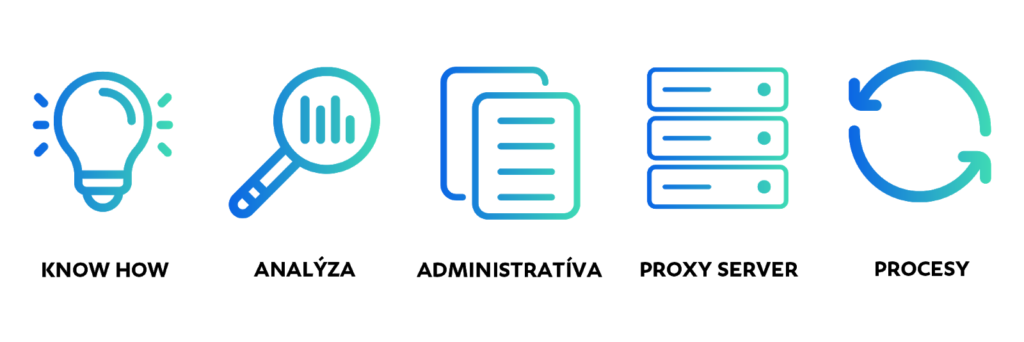Nová rola bánk v elektronickej autentifikácii a autorizácii s BankID
V oblasti budovania digitálneho ekosystému je už niekoľko mesiacov horúcou témou Bank ID a oficiálnym spustením tejto služby sa v Česku začiatkom januára oficiálne posunula otázka digitalizácie o krok vpred. Nová služba otvára klientom bánk bránu do sveta online služieb eGovernmentu (štátnej správy), ako aj do služieb súkromného sektoru (energetika, e-commerce, banky, poisťovne), využitím prostriedkov autentifikácie identity. Pre banky zároveň vzniká príležitosť unifikovanej identifikácie cez platformy tretích strán ako napríklad do verejných administratívnych systémov.

Čo je BankID?
V praxi BankID predstavuje alternatívu k eObčance alebo dátovej schránke, ktoré zatiaľ nie sú medzi fyzickými osobami, ktoré nepodnikajú, veľmi populárne. Rozširuje tak národný systém pre elektronickú identifikáciu (Národní bod pro Identifikaci a Autentizaci – NIA), ako štátny produkt fungujúci v rámci eGovernmentu.
Práve napojením na NIA sa stávajú partnerské banky kvalifikovaným správcom identity (Identity provider – IdP). Poskytovanie elektronickej identity (eID) je bezplatné a klient má na ňu nárok, ak spĺňa zákonné podmienky. Klient si tak po overení dokladov vytvorí eID napojenú na NIA napríklad cez prístup do svojho internetového bankovníctva. Je však pravdepodobné, že v budúcnosti bude možné získať eID aj bez nutnosti otvorenia bankového produktu.
BankID a business
V priebehu roka 2021 očakávame, že službu spustí väčšina veľkých a stredných bánk pôsobiacich v ČR.
Hlavným cieľom prepojenia eGovernmentu a bánk je podporiť digitalizáciu v Česku a osvojenie si služieb eGovernmentu v spoločnosti. Tento projekt preto pre banky predstavuje niekoľko efektívnych riešení. Okrem jednoznačnej podpory digitalizácie, majú banky možnosť prístupu k aktuálnym základným osobným údajom svojich klientov, ktorí už viac nemusia pri zmene informovať jednotlivých poskytovateľov. Prístup k overeným informáciám klientov zároveň zjednodušuje onboarding klienta na pobočke a zamestnanci tak môžu alokovať ušetrený čas na aktivity s vyššou pridanou hodnotou.
BankID a klienti bánk
Štyrmi základnými piliermi BankID sú: bezpečnosť (služba využíva osvedčený a bezpečný spôsob ktorým sa klient prihlasuje do svojho bankového účtu), jednoduchosť (služba zjednocuje prihlasovanie jednou prihlasovaciou metódou na webstránky úradov či vybraných e-shopov), dostupnosť (prihlásenie či overenie bankovou identitou je bankami poskytované zdarma, avšak banky môžu podnikom účtovať poplatky za poskytovanie služieb autentifikácie zákazníka), flexibilita (jeden z najvýraznejších benefitov je, že klienti si môžu škálu úradných záležitostí vybaviť odkiaľkoľvek, napríklad priamo zo svojej obývačky cez mobil, PC či tablet.
Využitie BankID
V súčasnosti je služba zameraná najmä na štátnu sféru, kde si klient môže vybrať zo škály cca 200 rôznych služieb. Medzi ne patrí napríklad overovanie platnosti dokladov ako občiansky preukaz, cestovný pas, vodičský preukaz či údaje evidované v registri obyvateľov, prehľad bodového systému vodičov, e-receptov, či založenie dátovej schránky kde sú dostupné výpisy z podnikateľských, trestných alebo verejných registrov. Užívatelia bankovej identity môžu taktiež elektronicky požiadať o sociálnu dávku či prihlásiť sa na Úrad práce cez Ministerstvo práce a sociálnych vecí.
V blízkej budúcnosti však banky plánujú identitu poskytovať aj súkromným poskytovateľom služieb, akými sú napríklad dodávatelia energií či telekomunikační operátori. Služba sa bude nejaký čas rozvíjať a postupne odkrývať pre všetkých svojich klientov nové možnosti.
Bezpečnosť
Pri otázke bezpečnosti banky klientom zabezpečujú prehľadné informácie o tom, kedy a kam sa klient prihlasoval a aké dáta sa v rámci BankID preniesli. Na overenie totožnosti je užívateľ presmerovaný zo stránok tretej strany na subjekt poskytujúci overenie, tj. užívateľ nezadáva svoje prihlasovacie údaje mimo banky a teda nevzniká priestor na ich zneužitie.
S čím pomôžeme my?
- Greyson prináša know-how problematiky týkajúcej sa základných registrov a BankID
- Pre klientov pripravujeme analýzu dopadov na súčasné systémy
- Zaoberáme sa potrebnou administratívou a zákonnými požiadavkami spojených s pripojením sa k registrom a k NIA
- Budujeme a dodávame proxy softvér pre komunikáciu s ZR alebo NIA
- V neposlednom rade službu BankdID implementujeme a zaisťujeme chod procesov




